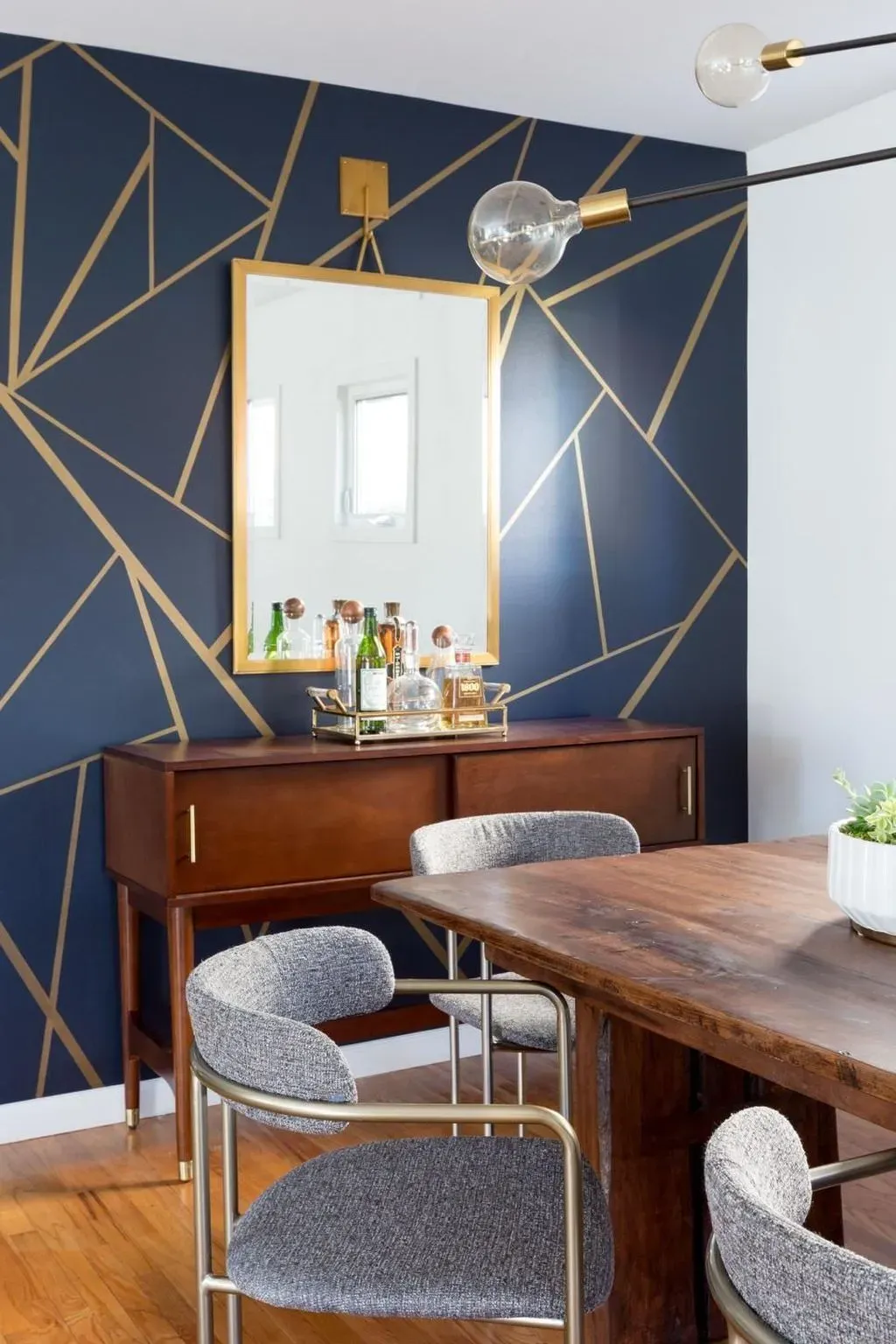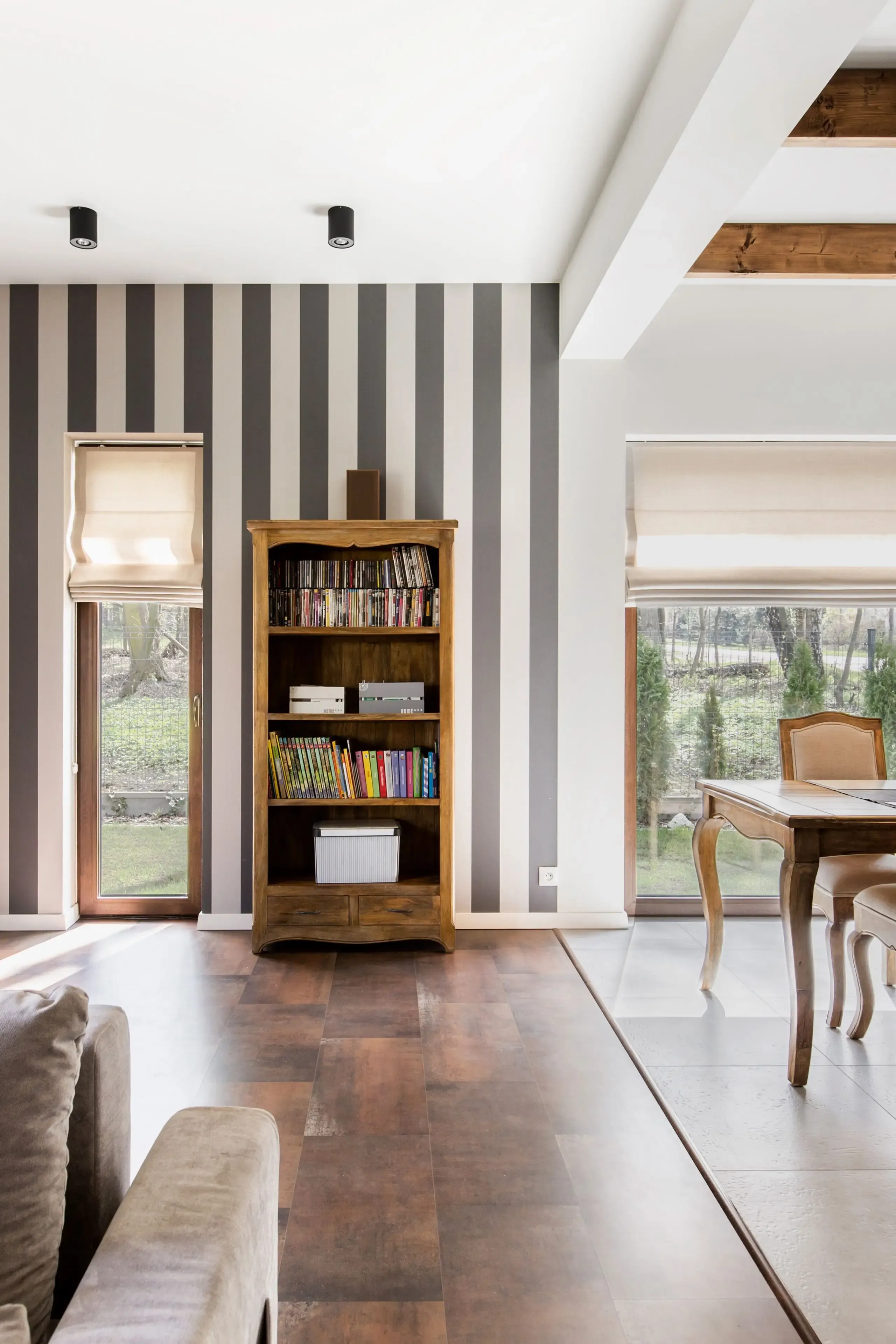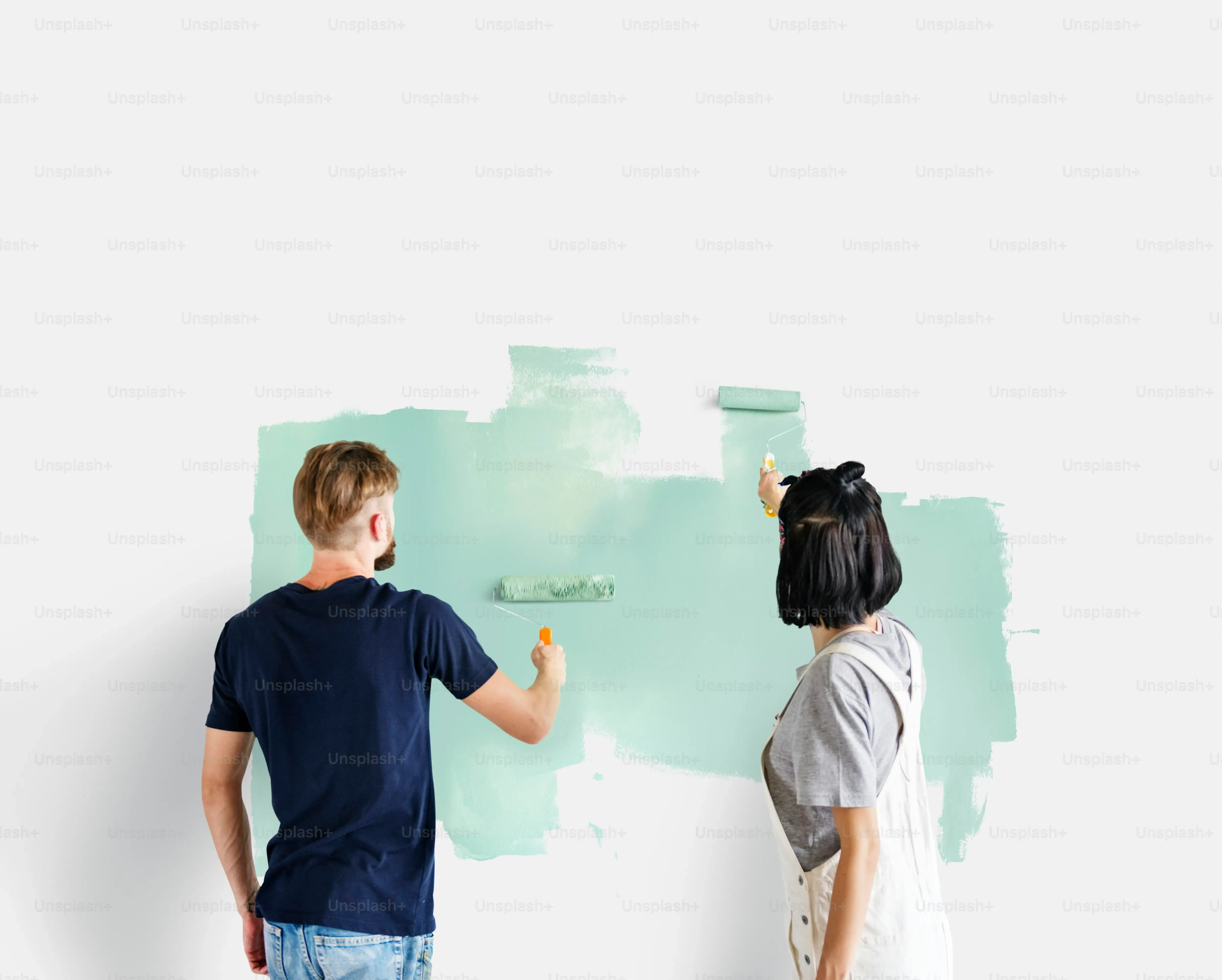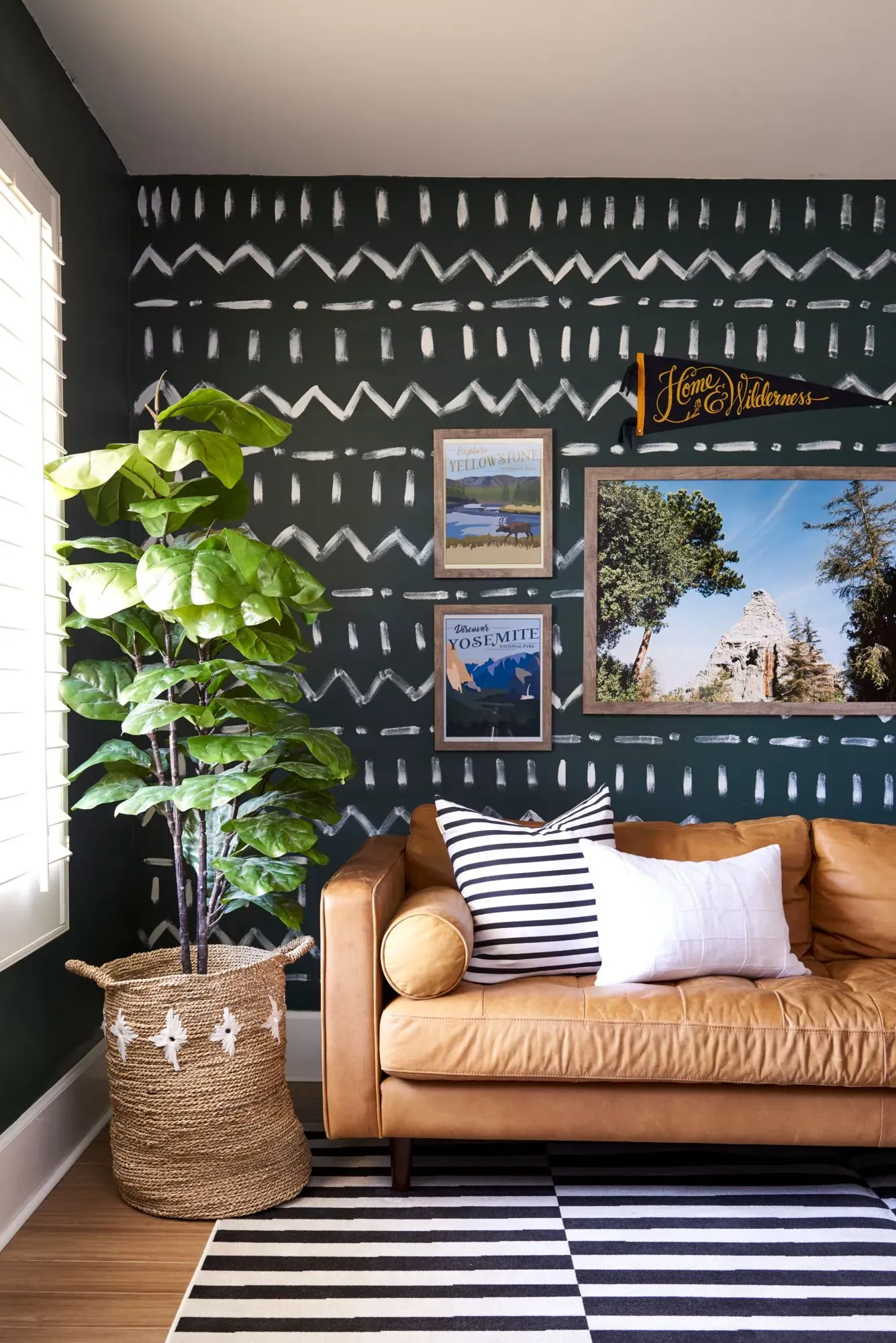Table of Contents
Ever walk into a room and think, "Something's missing"? Maybe it feels a bit... blah. Like a plain white shirt when you really wanted something with a bit of personality. That's often where a single wall, punched up with color, comes in. We're talking about accent wall paint design ideas, ways to take one surface and make it the star of the show without repainting the entire house. It’s a relatively low-stakes way to inject serious style and character into any space, from a sleepy bedroom to a dull living room.
Why an Accent Wall? Making a Statement

Why an Accent Wall? Making a Statement
Defining Your Space with Color
let's cut to the chase. Why bother painting just *one* wall? Think of it like this: in a wide-open space, or even a standard rectangular room, everything can feel a bit... amorphous. An accent wall acts like a visual anchor. It immediately tells your eye where to look first, creating a focal point where there wasn't one before. Suddenly, that wall behind the sofa or the one where your bed sits isn't just a flat plane; it's a deliberate design element.
This single pop of color or pattern can make a large room feel cozier by visually pulling one area in, or it can add depth and interest to a smaller room without overwhelming it. It’s about creating zones, even if the room is technically one big box. It gives the space structure and purpose, guiding how you perceive and use the area. It’s less about just slapping paint on a wall and more about strategic design.
Injecting Personality Without Committing Everything
Let's be honest, repainting an entire room can feel like a monumental task, not to mention a financial hit if you hate the color a week later. That's where accent wall paint design ideas shine. They offer a fantastic way to experiment with bold colors or dramatic textures that you might be too hesitant to use on all four walls. It's a chance to show off a bit of your personality, maybe that daring side you keep hidden under a pile of beige throw pillows.
Choosing one wall means the commitment is lower, the cost is less, and the effort is significantly reduced. If you decide you don't love that vibrant teal or deep charcoal six months down the road, changing just one wall is a weekend project, not a life-altering decision. It allows for creativity and expression without the potential for major regret. It’s the design equivalent of getting a temporary tattoo instead of a full sleeve – you get the impact, but you can always switch it up.
- Creates a focal point.
- Defines specific areas in a room.
- Adds depth and interest.
- Allows for bold color experimentation.
- Lower cost and effort than painting a whole room.
- Easy to change if you don't like it.
Choosing the Right Color: Accent Wall Paint Design Ideas

Choosing the Right Color: Accent Wall Paint Design Ideas
Start with What You Already Have
so you're sold on the idea of an accent wall. Great. Now for the color. This isn't picking a crayon from a box based on how shiny it looks. The first real step in choosing your accent wall paint design ideas is to look around the room you're trying to transform. What colors are already there? I'm talking about your sofa, your rug, your artwork, even those weird ceramic cats your aunt gave you. These existing elements aren't just clutter; they're your starting palette.
Think about the dominant colors and the accent colors already present. Your accent wall color should ideally complement or contrast with these existing hues, not clash violently like two toddlers fighting over a toy. If your room is mostly neutrals – beiges, grays, whites – you have a wide-open field. You can go bold with a jewel tone like emerald green or sapphire blue, or deep and moody with charcoal or navy. If your room already has a lot of color, maybe pick up one of the less dominant shades from your rug or art and use a deeper or lighter version of that for the wall. It’s about creating harmony, not chaos.
Consider the Mood You Want to Set
Colors aren't just pretty; they mess with your head. Seriously. There's a whole psychology behind it, and it's crucial for your accent wall paint design ideas. Think about what you actually *do* in this room. Is it a bedroom where you want to relax and feel calm? Then maybe a soft blue, a muted green, or a warm gray is the way to go. Trying to paint one wall bright red in a bedroom might just make you agitated, not rested.
Is it a dining room where you entertain? Warmer, richer tones like deep reds, oranges, or even a bold teal can feel more stimulating and social. A home office? Greens and blues are often recommended for focus and productivity. Don't just pick a color because it's trendy. Pick it because it feels right for the function of the space and the vibe you're aiming for. Sometimes the most effective accent wall paint design ideas come from thinking about feeling, not just looking.
Room Type | Suggested Accent Colors (Examples) | Mood Created |
|---|---|---|
Bedroom | Soft Blues, Muted Greens, Warm Grays, Deep Navy | Calming, Relaxing, Serene |
Living Room | Bold Teal, Emerald Green, Deep Charcoal, Rich Burgundy | Dramatic, Inviting, Cozy (depending on shade) |
Dining Room | Terra Cotta, Deep Red, Mustard Yellow, Bold Orange | Stimulating, Energetic, Social |
Home Office | Greens, Blues, Warm Grays | Focus, Productivity, Calm |
Test, Test, and Trust Your Gut
Look, paint chips in a store are liars. They look completely different under fluorescent lights than they do on your wall in natural daylight or evening lamp light. Before you commit to five gallons of "Mystic Swamp" or whatever catchy name the paint company gave it, buy a few sample pots. Paint decent-sized swatches (at least 1x1 foot) on your intended accent wall. Paint them next to each other. Paint them in different spots on the wall.
Live with those swatches for a few days. See how they look in the morning, afternoon, and evening. How do they look with your lights on? How do they look next to your furniture? This is the single best way to avoid a costly mistake. Once you've seen the colors in context, trust your gut feeling. One color will likely just feel right, even if it wasn't the one you initially expected to love. Your personal reaction is a key part of finding the best accent wall paint design ideas for your home.
More Than Color: Creative Accent Wall Paint Design Ideas

More Than Color: Creative Accent Wall Paint Design Ideas
Beyond the Solid Block: Patterns and Textures
so you've picked a killer color for your accent wall. But wait, who says it has to be just a flat, boring expanse of that single shade? This is where accent wall paint design ideas get really interesting. You can add texture and pattern using nothing but paint and some clever techniques. Think stripes – classic, yes, but you can play with width, direction (horizontal stripes can make a room feel wider), and even varying shades of the same color for subtle depth.
Or consider stencils. They've come a long way from cheesy country borders. You can find intricate geometric patterns, organic shapes, or even faux wallpaper effects using stencils. A tone-on-tone stencil pattern (using a slightly lighter or darker shade of your base color) adds sophistication without being overwhelming. Venetian plaster techniques, while a bit more advanced, can give you a beautifully textured, almost stone-like finish. Don't limit yourself to just flat color; the brush (or roller, or sponge) is your tool for creating something truly unique.
Geometric Shapes and Murals: Making Art Stick
If stripes feel too tame, why not get architectural? Geometric accent wall paint design ideas are incredibly popular right now, and for good reason. You can tape off bold shapes like triangles, squares, or even more abstract angles. Painting these shapes in contrasting or complementary colors turns your wall into a modern art piece. It requires careful measurement and taping, sure, but the visual payoff is huge. It’s like giving your wall a sharp haircut.
Feeling really ambitious? A mural isn't out of the question. This doesn't mean you need to hire a professional artist or be Picasso yourself. Simple landscape silhouettes, abstract color blocks, or even a large, simplified floral design can make a dramatic statement. Projecting an image onto the wall and tracing it is a common trick. These kinds of accent wall paint design ideas turn a wall from a background element into the absolute centerpiece of the room, demanding attention in the best possible way.
- Use painter's tape for clean geometric lines.
- Experiment with stencils for repeatable patterns.
- Try tone-on-tone techniques for subtle texture.
- Consider faux finishes like Venetian plaster.
- Don't be afraid of simple mural designs.
- Projecting images can help with tracing complex shapes.
Painting Your Accent Wall: Tips and Tricks

Painting Your Accent Wall: Tips and Tricks
Prep Work: It's Not Optional, Folks
you’ve picked the perfect color, maybe even a cool pattern for your accent wall paint design ideas. Awesome. Now comes the part everyone wants to skip: the prep. Look, I get it. Sanding, cleaning, taping – it’s tedious. But skipping this step is like building a house on quicksand. It’s going to look like garbage eventually, probably sooner than later. Start by cleaning the wall. Dust, grime, that weird sticky spot from who knows what – get it off. A damp cloth is usually fine, just make sure it dries completely.
Next, deal with imperfections. Fill any nail holes or dents with spackle, let it dry, then sand it smooth. You want a nice, flat surface. Prime the wall, especially if you're going from a dark color to light, or if you've done a lot of patching. Primer gives the paint something to stick to and ensures your true color comes through without weird undertones from the old paint. Taping is crucial for clean lines, especially if you're doing geometric accent wall paint design ideas. Use good quality painter's tape and press the edges down firmly so paint doesn't bleed underneath. Don't skimp on the prep; your future self will thank you.
Getting the Paint on the Wall
Finally, the fun part. Or the stressful part, depending on your tolerance for potential drips. Start by "cutting in" – using a brush to paint around the edges of the wall, near the ceiling, baseboards, and corners. Do this before you use the roller. It gives you a clean line to roll up to. When rolling, load your roller evenly and apply the paint in a "W" shape, then fill it in. This helps distribute the paint consistently and avoids roller marks.
Two thin coats are almost always better than one thick, drippy coat. Let the first coat dry completely according to the paint can's instructions before applying the second. Trying to rush this just leads to frustration and a patchy finish. Pay attention to your edges as you roll near the cut-in lines; you want to blend them seamlessly. Don't overwork the paint; once it's on the wall, leave it alone. Step back, admire your progress, and resist the urge to constantly go back and touch spots.
- Cut in edges with a brush first.
- Use a roller for the main wall area.
- Apply paint in a "W" pattern.
- Always apply two thin coats instead of one thick one.
- Let the first coat dry completely before applying the second.
- Carefully blend roller strokes into cut-in areas.
- Resist the urge to overwork the paint.
The Finish Line and What to Avoid
Timing is key when removing painter's tape. Pull it off while the paint is still slightly wet (but not so wet it drips) for the cleanest lines. If you wait until it's bone dry, the paint can sometimes peel up with the tape. Pull it off at a 45-degree angle, slowly and steadily. If you notice any small bleeds, you can often touch them up carefully with a small brush and the wall color, or even the trim color if it bled onto the trim.
Don't immediately put furniture back against the wall. Give the paint a few days to fully cure, not just feel dry to the touch. This prevents scuffs and marks. Also, don't get discouraged if the first coat looks terrible; it almost always does. Trust the process and the second coat will work wonders. The biggest mistake people make with accent wall paint design ideas is rushing the prep or the drying time between coats. Patience pays off with a sharp, professional-looking accent wall.
Ready to Make Your Wall Talk?
So, there you have it. An accent wall isn't some mystical beast reserved for design gurus. It's just paint, a wall, and a bit of nerve. Whether you're leaning towards a deep, dramatic hue or a subtle geometric pattern, the point is to break the monotony and give your room some much-needed character. It’s a chance to experiment without committing to a whole room overhaul. Worst case? You repaint one wall. No big deal. Go grab a few paint chips, stare at them for a while, and pick the one that makes you feel something other than bored. Your wall is waiting.
